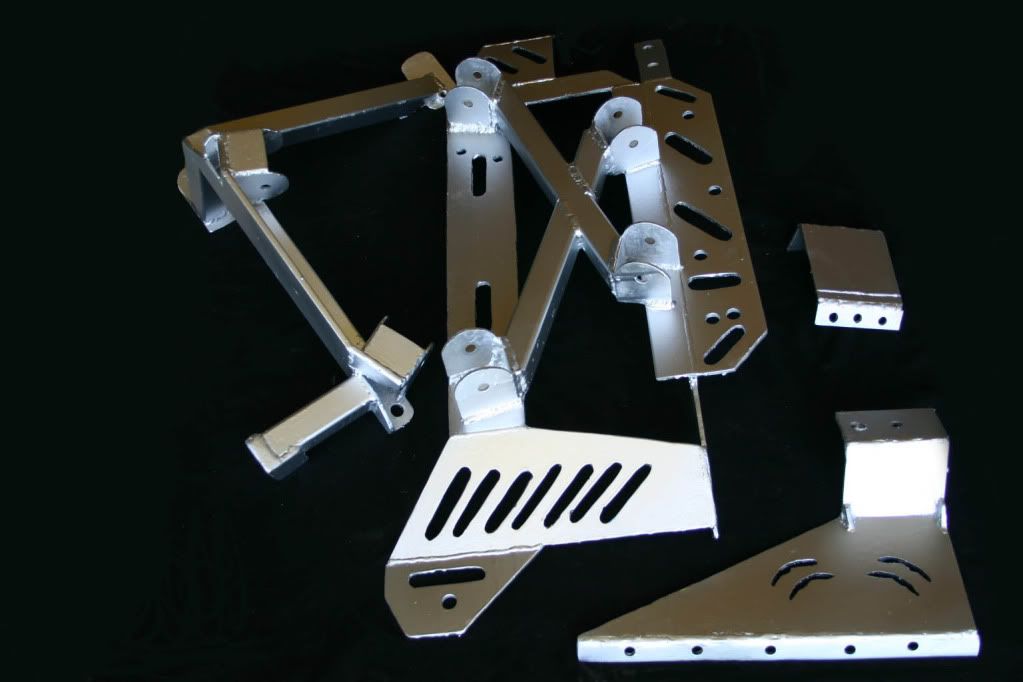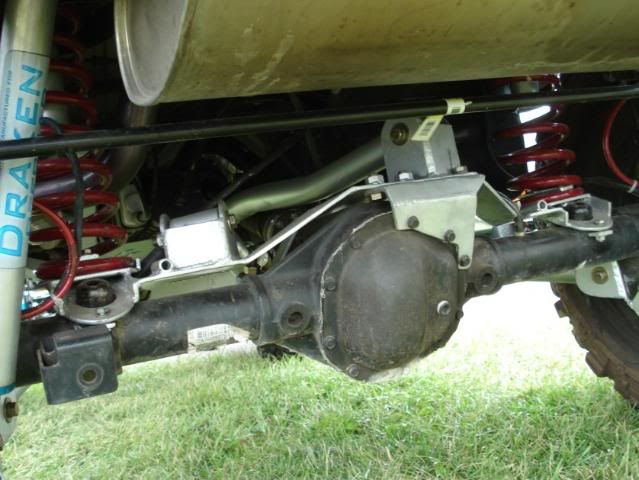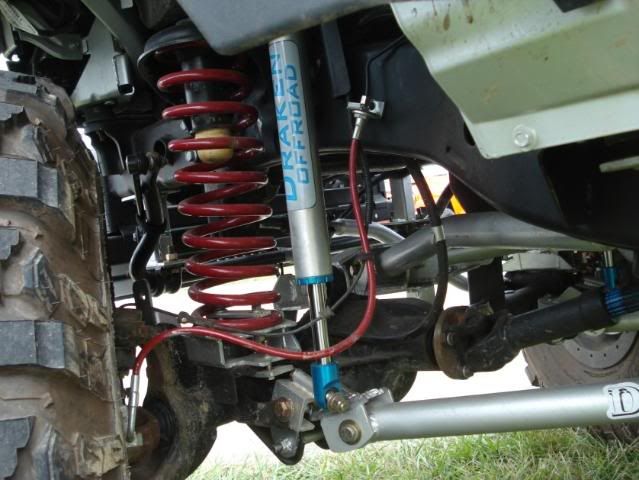Their 8" lifted jk on 39's was at the final rcrocs and i could not beleive at how... umm... "different" it was.
everything is entirely bolt on
it can only bolt to stock axles
they claim it is good for 42" tires (on stock running gear nonetheless)
and with the 8" you gain in suspension
you lose 8" at the belly
here is why they mountedthe arms so low







everything is entirely bolt on
it can only bolt to stock axles
they claim it is good for 42" tires (on stock running gear nonetheless)
and with the 8" you gain in suspension
you lose 8" at the belly
here is why they mountedthe arms so low
We started by designing a system to fit 40" tires without chopping up the truck to get them under there.We also wanted to have proper geometry which would allow us to successfully combine on-road drivability with extreme offroad capabilities.
The geometry of the links are such that any loss of ground clearance you mention, if compared to a high pitched-link system, is amply replaced by a very predictable and regular suspension cycle and drivability. This we feel this gives our system the edge on traction and body behaviour over very rough terrain. So any ground clearance we have lost compared to other kits, is compensated with the massive construction of our arms and the advantage of extra traction.
I hope this helps clear up why the links are the way they are.
The geometry of the links are such that any loss of ground clearance you mention, if compared to a high pitched-link system, is amply replaced by a very predictable and regular suspension cycle and drivability. This we feel this gives our system the edge on traction and body behaviour over very rough terrain. So any ground clearance we have lost compared to other kits, is compensated with the massive construction of our arms and the advantage of extra traction.
I hope this helps clear up why the links are the way they are.











Comment